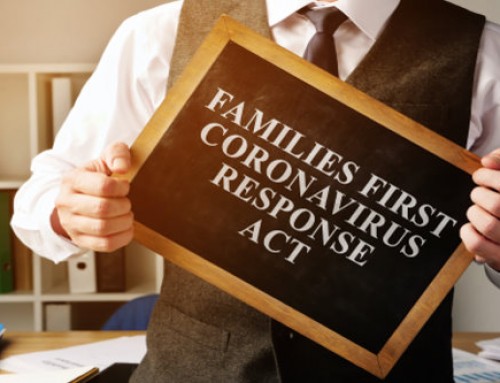Nearly 2 million Americans report having been victims of workplace violence every year. The U.S. Bureau of Labor Statistics reported that 403 people were fatally injured in work-related attacks in 2014. The deadliest workplace violence incidents involve active shooters, many of which are reported on in the media. Unfortunately, it appears that workplace violence is increasing each year. Organizations should consider the need to address workplace violence in an attempt to prevent violence in the first place and to appropriately and safely respond to it if it does occur.
Tools to Discourage Workplace Violence
Workplace violence can include physical violence, intimidation, harassment, or other disruptive and threatening behavior in the workplace. People bring violence to work for a myriad of reasons, including domestic disputes, intentions to commit a crime (like stealing from the workplace), workplace disputes, revenge, mental illness, or terrorism. Because the source of workplace violence can be so varied, understanding how to prevent it and employing tools to prevent it can be challenging. Here are some tools and tips compiled by safety experts on how to prevent workplace violence.
Include management and workers across disciplines
Utilizing a multidisciplinary approach is important when planning, developing and implementing workplace violence prevention programs. Top management involvement can help to ensure adequate resources (both time and personnel) will be devoted to the workplace violence prevention program. Also critical is worker participation and involvement to ensure the program is embraced among all staff.
A multidisciplinary team approach to planning and implementing a workplace violence prevention program will involve staff from different levels and departments of the company. Using a multidisciplinary team can improve the depth and effectiveness of a workplace violence prevention program that aims to assess and address verbal and physical threats of violence and actual reported incidents of workplace violence. Members of management, human resources, unions, security, legal, health and safety, labor relations, and communications departments should all be included in workplace violence prevention program planning.
Create, Implement, and Utilize Anti-Violence Policies
Employers should consider a clear policy for addressing violence and threats of violence. Staff at every level should be aware of and involved in the policy, from managers to executives to employees. An effective workplace violence prevention policy will have clear procedures and protocols for how to report and to respond to incidents or threats of workplace violence. The workplace violence prevention policy must define and maintain clear lines of communication for victims to make reports. Consider that the victim’s direct supervisor may be the person threatening the victim and allow for multiple avenues of reporting violence, both vertically (straight up the management chain) and horizontally (across department areas).
Address the workplace violence prevention policy regularly in staff meetings so staff is always aware of its existence, enforcement, and how to use it. The policy should be reviewed annually and updated as needed. Hopefully, an organization will never experience workplace violence. But if an incident does occur, both the effectiveness of the policy and the organization’s response should be reviewed after the incident.
An assessment and response team may be an effective way for an employer to assess and respond to threats of violence in the workplace. The team should be multidisciplinary again, consisting of staff from human resources, security, and other departments where possible. The team should be trained on how to accept reports of violence or threats of violence, how to assess the reports, and how to respond to incidents in the workplace.
Train, Train, Train
Training is always a best practice when instituting new policies, procedures, and protocols. In this instance, training can and should be varied, regular, and in-depth. Training on workplace violence prevention can range from the details of the workplace violence prevention policy and how to use it on how to respond to a violent intruder in the workplace. Training should involve all staff including executives, managers, and staff.
It may be appropriate to include all of the staff in some training opportunities; other training may be best tailored to managers or executives who must learn how to respond appropriately and effectively to reported violence or threats of violence. Training should be recurring and should cover the violence prevention policy, reporting requirements, and evaluation and response procedures to a report. Bringing in outside trainers may be effective for your workplace, but train-the-trainer methods (where a professional trains management within a company and management goes on to train the remainder of the staff) can be even more effective. Specialized training to create a positive work environment, to improve awareness of cultural differences (diversity training), and to develop the cultural competence of all staff might also be an effective tool to decrease the incidence of workplace violence.
Evaluate and update the Policy and Procedures
The policy and procedures a company establishes to prevent workplace violence should be evaluated annually (or more frequently if necessary) and changed as needed to make the policy more responsive and effective for the company. Depending on the size of the company, it may be helpful to hire external evaluators to collect data on the policy, training, and other methods employed by the company to reduce workplace violence and threats of violence. A thorough evaluation will inform the company of any gaps in the impact of the policies and procedures throughout the company’s structure to ensure the best possible outcomes. If a company is part of a larger industry sector, these evaluations may already exist from other company’s implementations and may help to institute an anti-violence program more efficiently and effectively.
How to Respond to Violence in the Workplace
Despite implementing all of the policies, training, and protocols to detect and prevent workplace violence, incidents are still possible. Employers and employees must be prepared to respond if violence does break out in the workplace. Many employers have an emergency or crisis response plans that detail how the staff is to respond to a fire or other emergency. However, these plans differ from the response required when there is a workplace violence emergency.
Create a Workplace Violence Emergency Plan
An effective workplace violence emergency plan details how staff and managers are to respond to an active threat of violence, like an attacker, an active shooter, or a bomb. The plan may need to be modified if an employer is spread out on campus and different types of buildings and facilities may be involved. A plan should include details and procedures on:
- Training all staff on the workplace violence emergency plan
- Procedures for evaluating and modifying the plan as necessary
- Calling for help and medical assistance
- Informing proper security, including internal security personnel and/or police officers
- Emergency escape routes
- Securing the area where the incident took place or is occurring
- Accounting for all employees present in the workplace when the incident occurred
- Identifying any employees who might be called upon to perform rescue duties
- How to help staff recover from a workplace violence emergency
- Engage an Active Shooter Training Response Officer
In South Carolina, law enforcement officers are offering Civilian Response to Active Shooter Events (CRASE) training. South Carolina was among the first states to adopt this type of training as the standard model. In 2018, South Carolina lawmakers passed a cumulative school safety bill mandating the SC Department of Education to develop a school safety plan that includes active shooter drills. Active shooter response training generally is offered for free by trained law enforcement officers. Most of the training occurs at the place of employment if choosing to train all staff. The training may include a presentation, a hands-on first aid module, safety assessment, and scenario-based training. Scenario-based training includes protocols, such as Avoid, Deny, Defend, and how to act when police officers arrive on the scene.
Businesses interested in more information should visit avoiddenydefend.org, or contact their local law enforcement for CRASE training. The employment lawyers at Gignilliat, Savitz & Bettis, LLP want employer counseling and employees in Columbia, South Carolina to be as safe as possible. Contact us today for assistance in putting together a sound policy and plan to prevent and respond to workplace violence.






